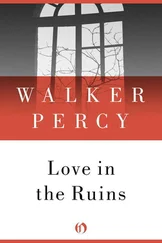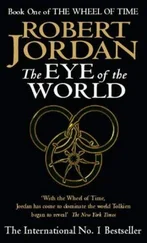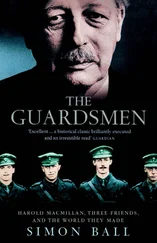On the plus side, however, Phillip could now send Banks the first consignment of seeds; and he also threw in a stuffed kangaroo and reported that ‘these Animals are very numerous, but after being fired at grow very shy’.[23]
Though Phillip’s first duty was to the settlement, he did as much as he could to collect seeds and plants for Banks. He knew that this had to be done before the convict ships and the transports left Port Jackson for London. The first ships began to leave in May 1788, but Phillip had nothing for Banks by then and it would take him until the last ships sailed, the convict ship Alexander and the store ships Fishburn and Golden Grove , in November, before the collections were ready. What exactly was sent is not known but some of the ‘Tubs of Plants’ and seeds must have made it because several were introduced into Kew around the time that the ships returned – the consignment included several species of Banksia , orchids and a ‘Kangaroo vine’.[24]
It shows how indebted Phillip felt to Banks that he tried so hard to get him the botanical specimens he’d asked for. Conditions were not good in the fledgling colony. While quite a few of the plants Phillip had brought from Rio de Janeiro and the Cape – including the cochineal insect on its prickly pear cactus – were doing well, these were what Phillip referred to as the luxuries; the basics, especially wheat, were doing very poorly. Added to that, most of the cattle that Phillip had bought at the Cape had not survived or had wandered off into the bush. In his despatches to Lord Sydney and Evan Nepean at the Home Office, and Philip Stephens at the Admiralty, Phillip pleaded that the next convict ships should bring provisions, food, clothing and medicines that would last at least two years.[25]
In the meantime, the colony was facing starvation. To save it, Phillip sent HMS Sirius to Cape Town for vital supplies. The ship left in early October 1788. Because of the winds at that time of the year, it had to go by way of Cape Horn. It didn’t reach Cape Town until 2 January 1789. After filling its hold with enough supplies for a whole year, the Sirius arrived back in New South Wales on 8 May 1789.[26] The ship’s supplies were only just in time to avert disaster.
By then, in London, the Second Fleet, taking more convicts and supplies to New South Wales, was preparing, and Sydney had received Phillip’s letter begging him for more supplies.[27] He wrote to the Admiralty formally instructing that they should get a naval ship ready to sail to New South Wales, though it is clear that, informally, the preparations were already under way.[28]
The ship in question, HMS Guardian , was virtually new, having been no further than the Channel since 1784, when it was completed. Most of the guns were removed in order to make more room for supplies. The 26-year-old Lieutenant Edward Riou received his commission to command the ship on 21 April 1789.[29]
Riou had been a midshipman in 1776 on HMS Discovery , one of two ships on Cook’s third voyage. When the ship returned from its intensive exploration of the Pacific in October 1780, Riou was promoted to the rank of lieutenant. For the next several years he was stationed in the West Indies, in the Channel and, finally, for two years, he was in Newfoundland as second lieutenant to Captain Erasmus Gower (who will crop up again in a later chapter).
Riou thus had experience in the world’s main oceans and though he had not landed in Australia, he came very nearly in sight of Van Diemen’s Land, having sailed across the Southern Ocean from the Cape towards New Zealand.
Within days of Riou’s commission, Banks was involved in preparing the voyage. It seems that Banks saw the Guardian as a suitable vehicle for sending new and interesting plants back from New South Wales for Kew. Banks wrote to Nepean at the Home Office on this exact point less than a week after Riou’s commission. Banks suggested that the area at the stern of the ship bounded by a rail – the taffrail – could be adapted as a storage unit for plants in pots and should be glazed over.[30]
At some point in the next few weeks, plans for the Guardian began to change quite radically. Collecting for Kew in New South Wales remained an objective, but the scope of the ship as a plant carrier was substantially increased. Banks had been in conversation with William Grenville, the new Home Secretary, who had succeeded Lord Sydney, as well as other members of the government and the Admiralty. The upshot of these meetings was the decision that the Guardian should now take to New South Wales ‘such trees and plants as are useful in food or physic, and cannot conveniently be propagated by seed in potts of earth’.[31]
The original idea of using the taffrail was now defunct. A much larger space was needed. On Lieutenant Riou’s invitation, Banks visited the Guardian and had a look.[32] Riou had intended to be there to show Banks around, but, for some reason, the two men missed each other.[33]
Banks began his inspection with the commander’s cabin. It was far too small for what Banks intended; and the volume of supplies the ship was intending to carry meant that there was little spare room below deck. Botanists like John Ellis in Britain and Henri-Louis Duhamel du Monceau in France had recommended that the best method for transporting living plants across oceans was for them to be packed in organic matter, such as moss and earth, and placed in specially designed containers which would allow air to circulate and which could be moved around the ship to take advantage of the best conditions.[34]
This method worked well for small numbers of plants but the volume that Banks envisioned being moved meant that this time-honoured technique wasn’t appropriate. He needed a radically new solution and he had one in mind. As he told Grenville, he, with the assistance of the ship’s master and a shipbuilder, ‘caused the form of a small coach to be chalked upon the deck in such a manner as they both agreed would not be at all in the way of working the ship’.[35] Coach was the technical term for such a construction but Banks liked to call it an apartment because it was his intention that it would also house a gardener and his equipment. Its dimensions were 16 feet by 12 feet and 5 feet high, and it could be constructed, Banks stated confidently, in little more than one week.[36] It would house 93 pots of plants. Flexibility was built into the design of the coach so that it could respond easily to changing conditions. It had sliding shutters and a canvas cover to be used when the weather was fine but direct sunlight was to be avoided. In cold weather, glazed units in fitted frames took the place of the open gratings and a stove with chimney was provided for even colder weather.[37] Banks knew a lot about greenhouses – he saw them at Kew and he had several of them in his own property at Spring Grove.[38]
On the day he completed his inspection of the ship, Banks left a letter on board for Riou seeking his agreement to the idea of a coach so that an order for construction could be submitted. In addition to laying out the coach’s dimensions and the materials from which it would be made, Banks emphasised that the coach would also serve as a home for the plants Riou would be bringing back from New South Wales for the King.[39]
By return of post, Riou, not surprisingly, agreed to Banks’s plans, both to the construction of the coach and to returning home with plants from New South Wales.[40]
Once that was done, Banks turned his attention to the gardeners who would accompany the plants. James Smith and George Austin had worked at Kew, were experienced and up to the task. They would be going to New South Wales as Superintendent of Convicts, in which capacity they would be supervising convicts in gardening and agricultural work in general with the ultimate aim of passing on their specific expertise to the colony.[41] Smith was going to stay on in New South Wales for three years and would be collecting seeds and plants for Kew whenever he could.[42]
Читать дальше












